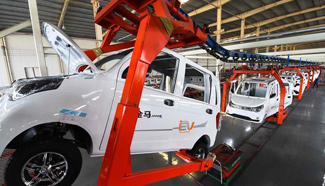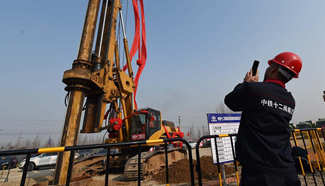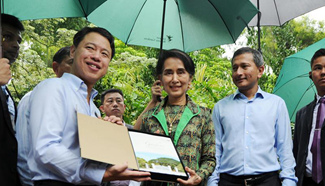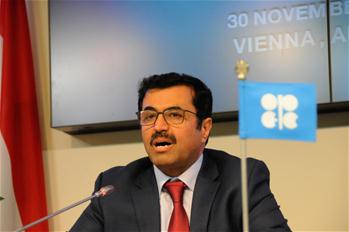
Photo taken on Nov. 30, 2016 shows an assembly line in a factory of China National Heavy Duty Truck Group Co., Ltd. in Jinan, east China's Shangdong Province. China's manufacturing Purchasing Managers' Index (PMI) came in at 51.7 in November, up from 51.2 in October, according to data released Thursday by the National Bureau of Statistics. (Xinhua/Guo Xulei)
BEIJING, Dec. 1 (Xinhua) -- China's manufacturing activity continued to expand for a fourth month in November, providing further evidence of a strengthening Chinese economy, official data showed Thursday.
The manufacturing Purchasing Managers' Index (PMI) came in at 51.7 in November, up from 51.2 in October and staying above the 50-point boom-bust line for the fourth straight month, the National Bureau of Statistics (NBS) said in a statement.
The last time manufacturing expanded at this pace was July 2014, and the last time the figure exceeded 51.7 was April 2012, when the number reached 53.3.
NBS statistician Zhao Qinghe attributed the steady upward trend to improving domestic demand, booming manufacturing in consumer goods and high-tech sectors, and better foreign trade figures.
The sub-index for production rose for a fourth month to 53.9, while that for new orders moved up for a second month to 53.2, both hitting their highest point this year.
Consumer goods manufacturing rose to 53.2 from 51.7 in October. High-tech and equipment manufacturing reported PMI figures of 53.2 and 52.5, both higher than the headline manufacturing index.
The new export orders sub-index accelerated from 49.2 in October to 50.3 in November, while the import sub-index rose from 49.9 to 50.6, the NBS said.
China's non-manufacturing activity also expanded at a faster pace in November, with the PMI rising to 54.7 from 54 in October, the bureau said in a separate statement.
The data came before the release of the Caixin manufacturing PMI, a private gauge of manufacturing activity, which showed slightly slower expansion.
Despite the upbeat sub-indices, several figures pointed to difficulty for manufacturers, Zhao Qinghe said.
An NBS survey showed that more than 30 percent of manufacturers, the highest share in three years, faced rising raw material prices and transportation costs, Zhao said.
Recent sharp depreciation of the yuan has led to higher costs for importing materials, hitting computer and other electronic sectors hard, he added.
Rising costs ate into profits of manufacturers, causing worries within the sector. As a result, the business outlook index dropped from 58.5 in October to 55.5 -- still within an optimistic range.
Meanwhile, small companies were doing much worse than larger ones, with small business PMI dropping to 47.4 from 48.3 in October.
The purchasing price index jumped to 68.3 from 62.6 in October, the highest since March 2011.
Upstream prices continued to surge, indicating tighter supply, according to a research note released by the investment bank CICC.
Although the momentum in coal price increases moderated in the second half of November, other commodity prices continued to rise, including steel, cement, aluminum, and other ferrous metals, the CICC said.
"Given time, improved manufacturing profitability and lower real interest rates may lead to some recovery in manufacturing investment," according to the note.
With export demand and private demand potentially on the mend, the CICC expects recovery in manufacturing demand.
Zhang Liqun, researcher with the Development Research Center of the State Council, also voiced his optimism.
The continued expansion of manufacturing shows that the economy has stabilized after a protracted slowdown, Zhang said.
China's industrial profits improved in October with a rise of 9.8 percent year on year, up from 7.7 percent in September, the NBS said late last month.
The country's GDP grew 6.7 percent in the first three quarters of 2016, steady with the first half and within the government's target range of between 6.5 and 7 percent for 2016.
"It is highly probable that the economy will continue steady growth in the future," Zhang said.










